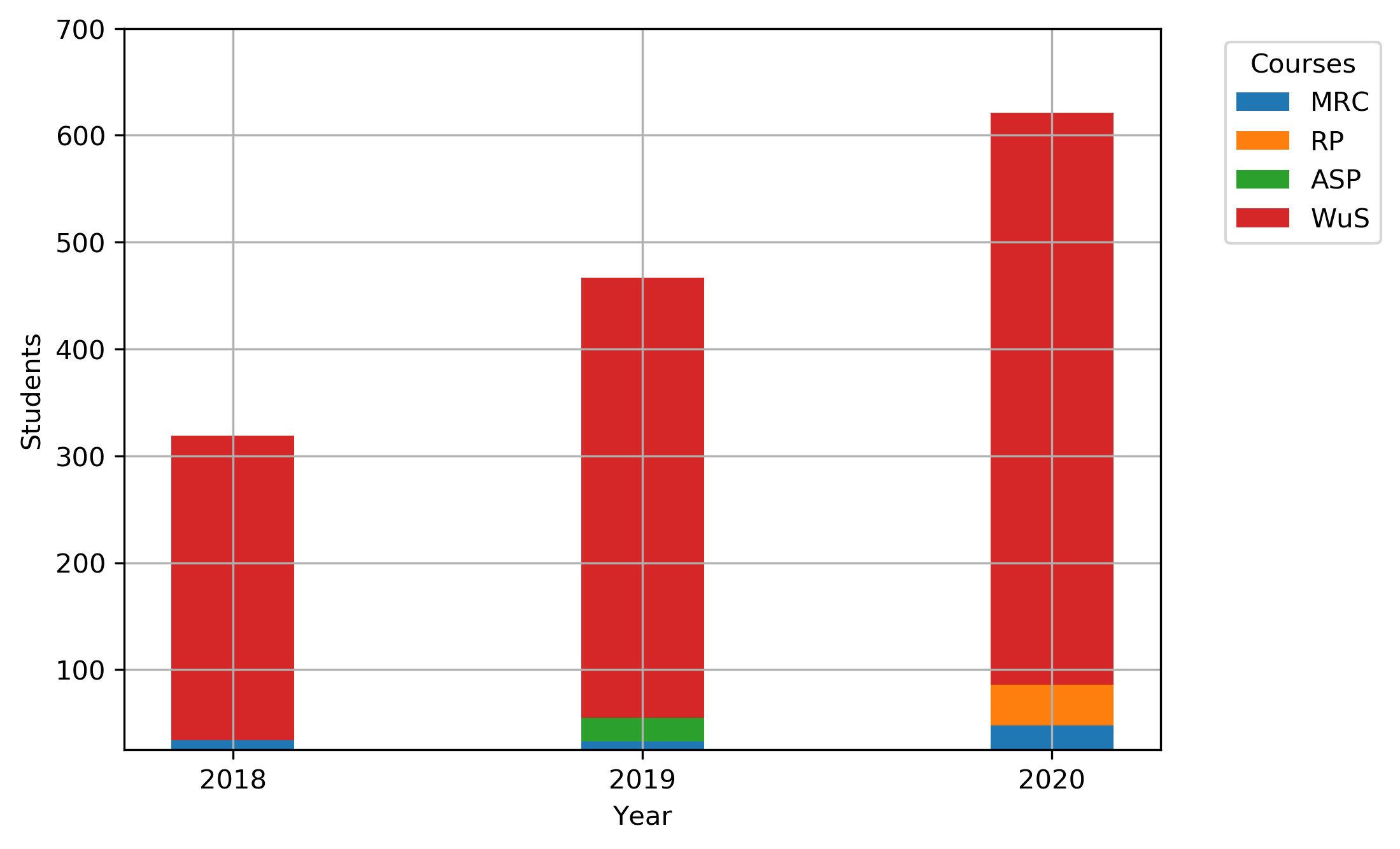About
The Idea of E-assessment
Our project concentrates on development of a system for E-assessment that would cover the whole process of study from homework to exams. Now a lot of software is used for homework during the semester, but exams are still pen and paper. It is important to change the workflow in such a way that students would use the same software tools for all assignments, tests and exams, because work during the semester plays a significant role in exam peparation. This is what so called Constructive Alignment.
Another important goal of our project is a development of an AI assistant for grading assessments and exams in the fields computer science, electrical engineering, physics and other technical disciplines. It can allow professors more time for other teaching activities and provide students with faster and less biased feedback on their work.
We focus on automated grading of the following answer types:
Program code
Formulas
Short text
Pictures (in the later versions)
Multiple choice
Single choice
The task of program code autograding is easily solvable by writing tests. Formulas checking is also easy to generalize and automate, but text and picture grading are harder tasks. Automated short answer grading ASAG is a form of automated grading along with automated essay and fill the gap gradings. This answer type normally consists of several sentences – from one sentence to one paragraph. In general one is concerned neither with writing style nor with spelling or grammar in ASAG. However, we are going to add a feature that would allow the professor who conducts a test to set the strictness of the evaluation: he or she should be able to set if the answers with misspelled words, especially specific terms, should be accepted. The teacher should also be able to estimate how large is the range of synonyms that the student can use.
As for the result of the grading, it is important to provide not only the grade, but a level of certainty of the grading and in the perfect case – generate the comments to each graded answer.
Software
The autograding system will be integrated into open-source system for creating and grading assigments nbgrader combined with Jupyter Notebook and other Jupyter Notebook”-compatible libraries.
Jupyter Notebook is a web-based tool that one can use to interatively develop codes, output the results, create textual documents with markdown, as well as plotting the result. Jupyter Notebook now supports many programming languages including the popular ones in the data science community such as Python and R.
We use nbgrader to manage assignments. nbgrader allows to choose if the assignment can be graded manually or automatically. Now the system allows only code assignments autograding, but we are going to extend it in such a way that it is possible to autograde formulas, natural language answers and pictures as well. The other features that we added are single and multiple choice questions.
Infrastructure
We started using Jupyter Notebook for both teaching and examination for years now. In the beginning, we started an electronic examniation using a usb stick which was given to students during the exam. The Jupyter Notebook file was copied beforehand. Although this is good in the sense of decentralization, it requires a lot of work before and after the exam e.g. distribute the exam files to every stick and then collect all students work after the exam. We might possibly loose students work if the stick is failed during the exam.
After several years using usb sticks, we switched to JupyterHub which is running on a single machine. However, we only run this server in 2018 until summer semester 2019 since we could not accomodate more users into a single server. The following figure shows the number of exam users per course using Jupyter Notebook.

The number of students taking electronic examinations.
We switched to a more scalable system and deployed JupyterHub on Kubernetes where we can always spin up more nodes if needed. Thanks to Zero to JupyterHub which provides a step-by-step instruction on how to deploy Jupyter Hub on Kubernetes. Nevertheless, we heavily modify the configuration to meet our requirements especially. The Kubernetes cluster is deployed locally on FB02 OpenStack Hochschule Bonn-Rhein-Sieg. For more details on our JupyterHub deployment, please see this page.
Not only do we provide the JupyterHub server for examinations, but also we provide similar servers for the students to work on their assignments. We also do not want the students using different libraries, other than what we provide, to work on the assignments, and thus their codes should be runnable on both student and grading servers. Morever, we are also dealing with 3rd semester bachelor students who may not be familiar with seeting up a Python environment. However, since our software is open source, we let the students to actively help and contribute to the software should they need new libraries to be available on the server. This way we could minimize the hassle of installing the environment on both parties.
The following figure shows the number of courses and corresponding students served e2x servers:

The number of students that used the server from 2018 to 2020.
Resources
380 GB memory
120 cores CPU
1.2 TB HDD